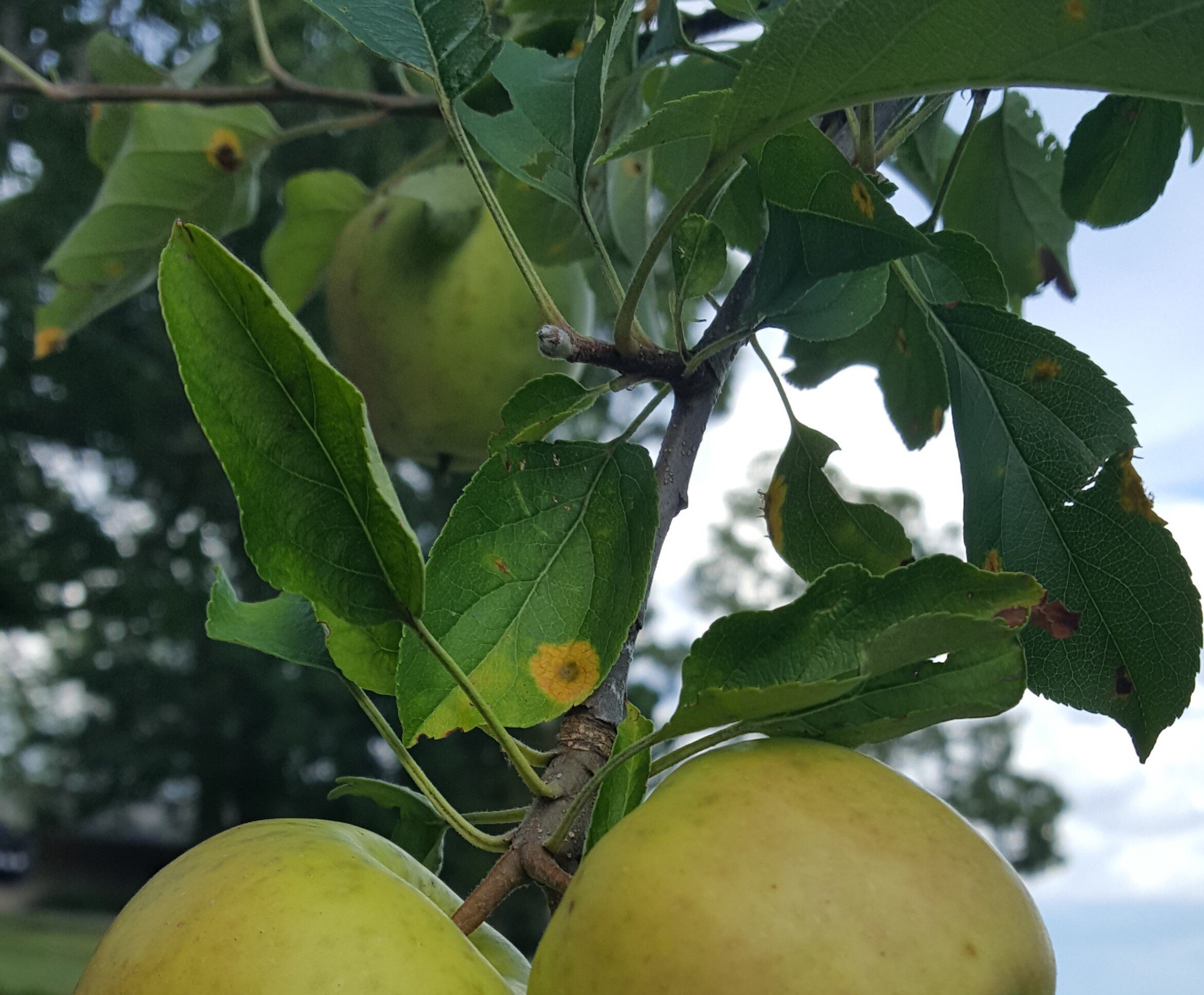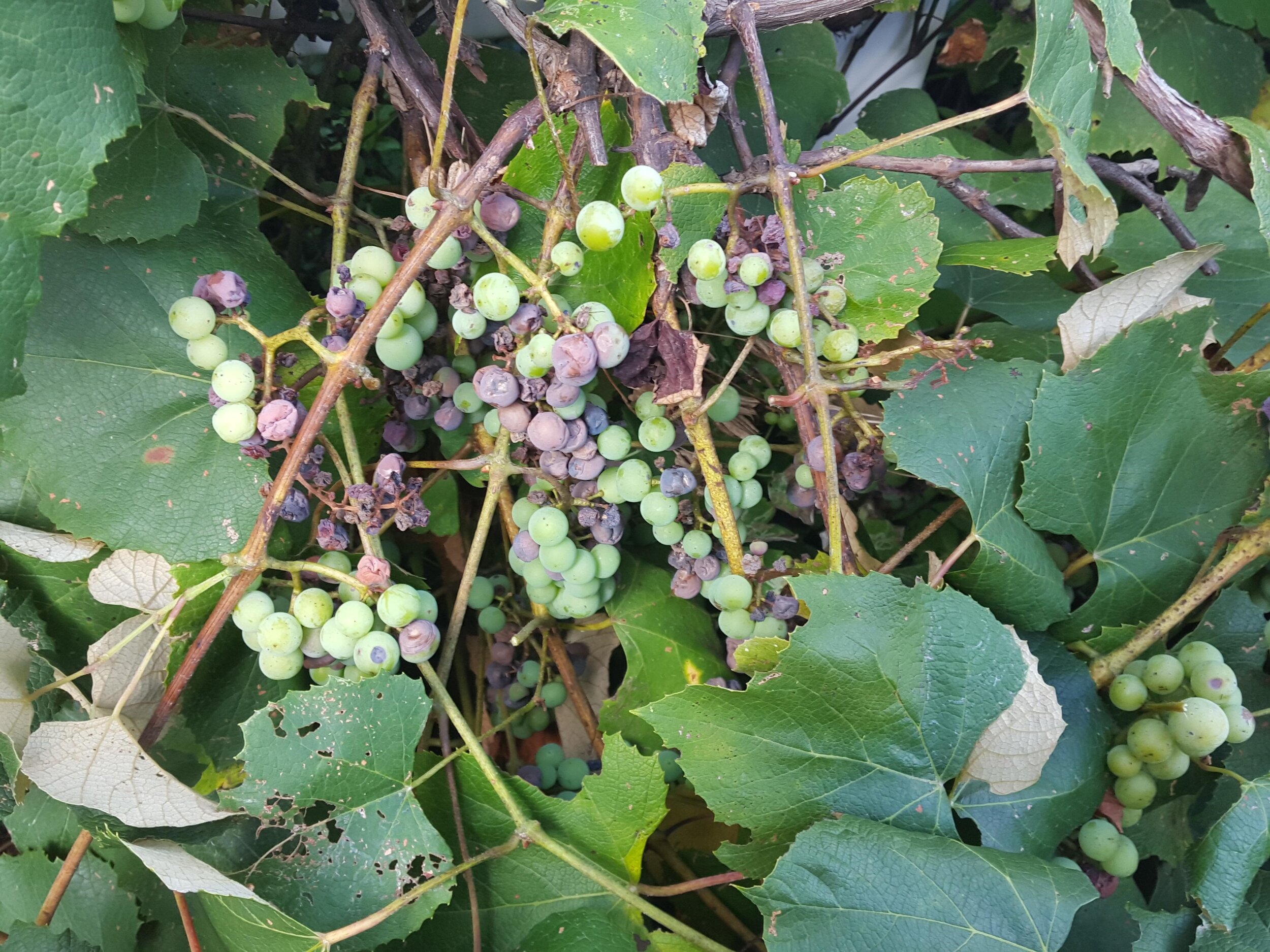Ask a Botanist: Part 3
Dear Charlie,
Can you help with fruit problems? I live in Signal Mtn. I know these questions are out of season but want information for the Spring.
1.) My grapes grow to pea-size then shrivel and die!? Any suggestions?
2.) My two apple trees get rust spots all over (cedar rust?). What is the best way to treat and when? Will any treatment affect the fruit?
Thanks!
J. Taylor Walker
Hi Taylor,
I do have a few suggestions for both of your crops.
Grapes:
The situation you describe with your grapes is not unusual. It is referred to as mummification and can happen in only a few days. The causes of this problem are one of possibly four situations;
Excess sunlight: This probably is not the problem now but the conditions for it could have been established many weeks ago.
Late Season Dehydration: This may have been at least partially responsible for the shriveled grapes. We did have a few weeks of dry weather in the mid-autumn timeframe; however, I doubt that this is your problem, too.
Sugar-Accumulation Disorder: This occurs when the normal fluids, mostly water, are lost from the fruits, and the sugars (usually glucose), are concentrated and increase the osmotic potential of the cells. The result is a shriveling of the grapes.
Bunchstem Necrosis; This is a dying of the stem that supports the grape clusters. Often the first indications of this disease are the spotting on the stem leading to each grape. Of all the causes of the shriveling of your grapes, this one seems to be quite logical.
As far as ideas for solving this problem for the next growing season, I have a few thoughts. First of all, you might want to water your vineyard more next season, including a regime of water applied to the vines if there has been no rain for the past 5-10 days. This would help to cure conditions b-d above. You might take soil samples from around your vines and send them to the Extension Service folks to get an idea of the nutrients that either are or are not in the soil. I assume you are fertilizing the soil about every 4-6 months during the growing season.
Apples
I think your identification is correct, Taylor. That bullseye design on the leaf is characteristic. But there are a lot of rusts in our area and this one on your apple tree does not seem to be damaging to the tree, at least not yet.
This group of fungi (family Pucciniaceae) usually require two hosts in order for the life cycle to be complete. The first is some apple or apple relative – which you have. The second is a member of the group that the easter red cedar is in, the junipers. You could just cut down nearby cedars in your neighborhood and thereby break the cycle. But since the fungal spores can travel long distances (e.g., 300 – 500 yards) on the wind, you’d have to cut down a lot of cedars and some people would not be too happy on Signal Mountain.
If you see the sores on the apples or on the tree leaves, it is too late to treat them this year. Wait until the leaves fall and the apple tree becomes dormant for the winter.
Rake up all the leaves under the trees and either burn them or transport them (perhaps with your garbage) away from your property. You might not want to recycle them because you don’t want to infect some other area, either on your property or elsewhere in your neighborhood. However, after you have raked up the leaves from the last season’s growth, you may find this enough to control the rust. Minor contamination will not harm either the fruit or the trees.
Treat the soil around your trees with copper as either a liquid spray or in a granular form. This can be purchased from one of our big box stores or ordered online. Please follow the directions carefully. In most cases, if one ounce is called for in the directions two ounces is NOT better.
You asked about rust treatments. As of December 2020, there are no fungicides that can be applied to edible fruit in the United States except by a licensed pesticide applicator. An alternative solution is to remove the infected trees and replace them with rust-resistant individuals. You won’t get any apples for probably 3 – 5 years.
I hope this helps.
Charlie
Good morning!
We have been slowly cleaning out trash from the woods surrounding our house. Unfortunately, the people who renovated many of the homes in the area thirty years ago threw all the materials and trash into the woods instead of using a dumpster. We have managed to pull out most of it but I have a question on rugs. Many of the folded-up rugs that were tossed have become their own little ecosystem — even housing scores of newts and beetles. Some of the rugs have also begun to grow into the tree roots and have beautiful moss growing on them or have become a part of the hill so that less erosion happens. I am inclined to leave them be, despite them technically being trash. May I have a second opinion?
Thank you for your time!
Sincerely,
Tirzah Burns
Hi Tirzah,
Thanks for your comment and question.
My short answer to your thoughts is, first, you should make your decision concerning your yard based on your own feelings. BUT my idea is that, if the rugs don’t bother you, they should be left there to develop their ecosystem and feed whatever other animals, fungi, or plants have come to depend on them. Of course, I assume the rugs are organic rugs (cotton, wool, etc.) and will be decomposed in a few years. Of course, if they were placed there 30+years ago, they probably are nylon, rayon, etc. If they are synthetic, they may last for many more years.
Another issue to consider is whether the ecosystem provided by the rugs are contributing to animals that would do damage to other parts of your property. This would include mice and rats that could eventually invade your home.
These rugs seem to have developed their own ecosystem and now are generating food for many other organisms. By removing the rugs, these ecosystems would have to start over.
In short, I wouldn’t do anything other than an occasional sprucing up the area. But even that may harm the critters that are there. Leave ‘em be!
Thanks for your curiosity.
Charlie



